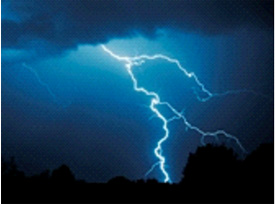Sep 22 2010
Imagine devices that capture electricity from the air - much like solar cells capture sunlight - and using them to light a house or recharge an electric car. Imagine using similar panels on the rooftops of buildings to prevent lightning before it forms. Strange as it may sound, scientists already are in the early stages of developing such devices, according to a report at the 240th National Meeting of the American Chemical Society.
“Our research could pave the way for turning electricity from the atmosphere into an alternative energy source for the future,” said study leader Fernando Galembeck, Ph.D. His research may help explain a 200-year-old scientific riddle about how electricity is produced and discharged in the atmosphere. “Just as solar energy could free some households from paying electric bills, this promising new energy source could have a similar effect,” he maintained.
 Powering homes with electricity collected from the air may be possible after scientists report solving a centuries old riddle about how moisture in the atmosphere becomes electrically charged.
Credit: iStock
Powering homes with electricity collected from the air may be possible after scientists report solving a centuries old riddle about how moisture in the atmosphere becomes electrically charged.
Credit: iStock
Scientists once believed that water droplets in the atmosphere were electrically neutral, and remained so even after coming into contact with the electrical charges on dust particles and droplets of other liquids. But new evidence suggested that water in the atmosphere really does pick up an electrical charge. Galembeck and colleagues confirmed that idea, using laboratory experiments that simulated water’s contact with dust particles in the air. They used tiny particles of silica and aluminum phosphate, both common airborne substances, showing that silica became more negatively charged in the presence of high humidity and aluminum phosphate became more positively charged. In the future, he added, it may be possible to develop collectors, similar to the solar cells that collect the sun to produce electricity, to capture hygroelectricity and route it to homes and businesses. Just as solar cells work best in sunny areas of the world, hygroelectrical panels would work more efficiently in areas with high humidity, such as the northeastern and southeastern United States and the humid tropics.